Diablo 4's story is intriguing, but I wish it didn't keep killing the momentum
Don't talk to me, I'm looting.
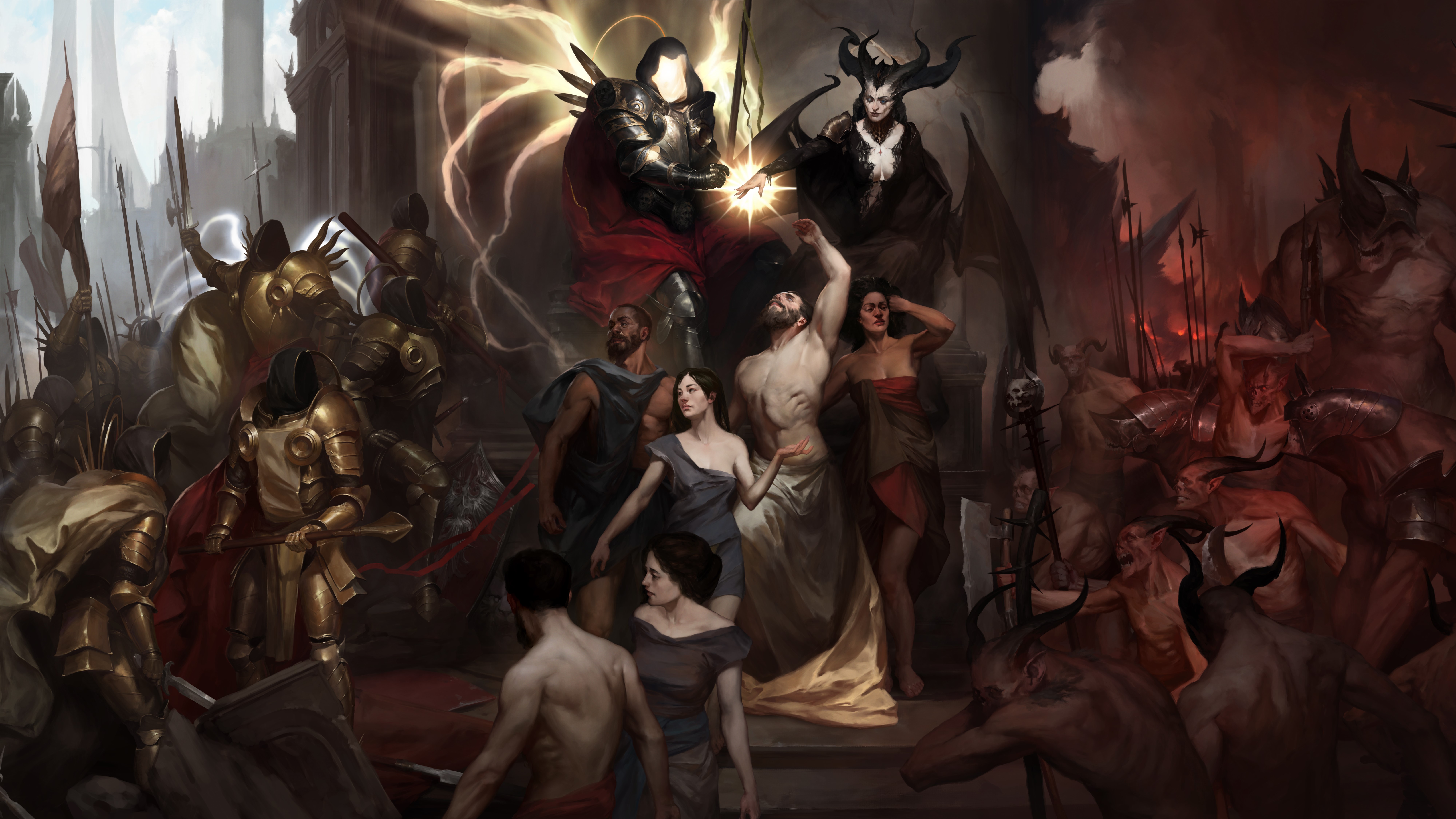
We learned a lot during the two Diablo 4 betas. We learned that it has MMO elements, that Sorcerers are OP, and that being a werebear might not be as fun as it sounds. But what I found most interesting in my time with the game is how committed Blizzard is to the game's storytelling and world-building. Even just in the opening it makes some really big narrative swings that set a very clear tone. Am I interested to see more? Well… yes and no.
(Spoilers from here on out for the section of story playable in the betas.)
The prologue sets the tone about as strongly as it possibly could, a short but impactful folk horror tale in a bleak and frozen land.
A compelling story isn't an easy thing to pull off in a traditional action-RPG like this. While the player is sprinting around the map murdering hundreds of monsters as fast as possible and hoovering up anything shiny that flies out of them, it's hard to convey a meaningful narrative without disrupting the momentum. Worse, players will often be playing through the same story over and over as they level different characters—how do you prevent it from becoming repetitive and irritating?
It's a question that's led a lot of action-RPG developers to push story into the background, but Diablo 4 still places it front and centre. The prologue sets the tone about as strongly as it possibly could, a short but impactful folk horror tale in a bleak and frozen land. Those vocal fans who complained that Diablo 3 wasn't dark enough: your complaints were clearly heard. Before we've even had a chance to think about whether we're putting points in Incinerate or Chain Lightning, we're confronted with a world where life is hanging on by a thread, corruption threatens to swallow up anyone it touches, and hope is a rare commodity. It's really effective and, at points, genuinely chilling.
Blizzard certainly still knows its way around a CG cutscene, too. Lilith's introductory scene, as she seduces a church of peasants into her cult, is wonderfully creepy and lavish, even if I couldn't help making certain comparisons.
After that great first impression, however, things get rather more uneven. The game's more open world-like environment, a sprawling map full of events and sidequests, is a clever bit of modernisation of the formula, but it does no favours to the narrative. Each of its many grim, muddy little villages feels largely identical, and though there are kernels of interesting ideas in the sidequests, the interchangeable NPCs handing them out do little to invite your investment. It says something that the most memorable sidequest in the beta was just an oddly direct Hellraiser reference.
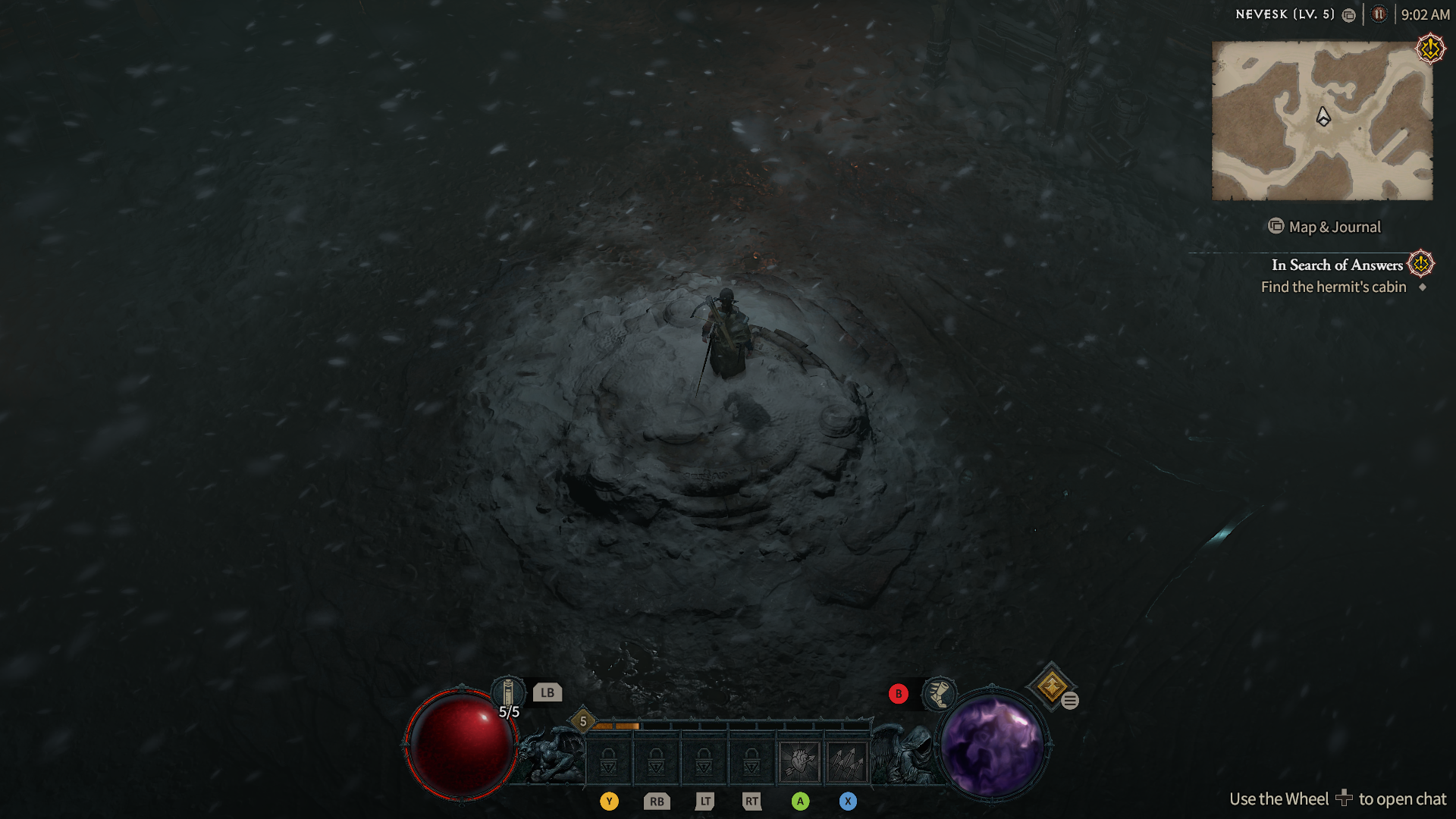
There's really no advancement in storytelling tools or techniques here from Diablo 3, and given it's been 11 years since then, that's a shame.
Even the monsters feel thematically empty. Largely just enemy types taken from the last game, they're plonked together in often random-seeming groupings out in the world. Unlike Diablo 3, there's no sense that, say, the undead roam here, or the goatmen tribes make camp here. They're all just… smushed together, squandering an easy opportunity for world-building.
The biggest gaming news, reviews and hardware deals
Keep up to date with the most important stories and the best deals, as picked by the PC Gamer team.
The main story similarly struggles, delivered primarily through charmless companion characters and 'visions' of Lilith that are essentially just audio logs and fantasy holograms. What's particularly disappointing is how story moments kill the momentum of play. Every time I had to stop and wait for a character to finish their line, or click on a book to make someone open a door, I felt like a dog on a leash—in such a fast-paced genre, it's hard not to resent any interruption to your rhythm, and on subsequent playthroughs to level up other classes it grates all the more.
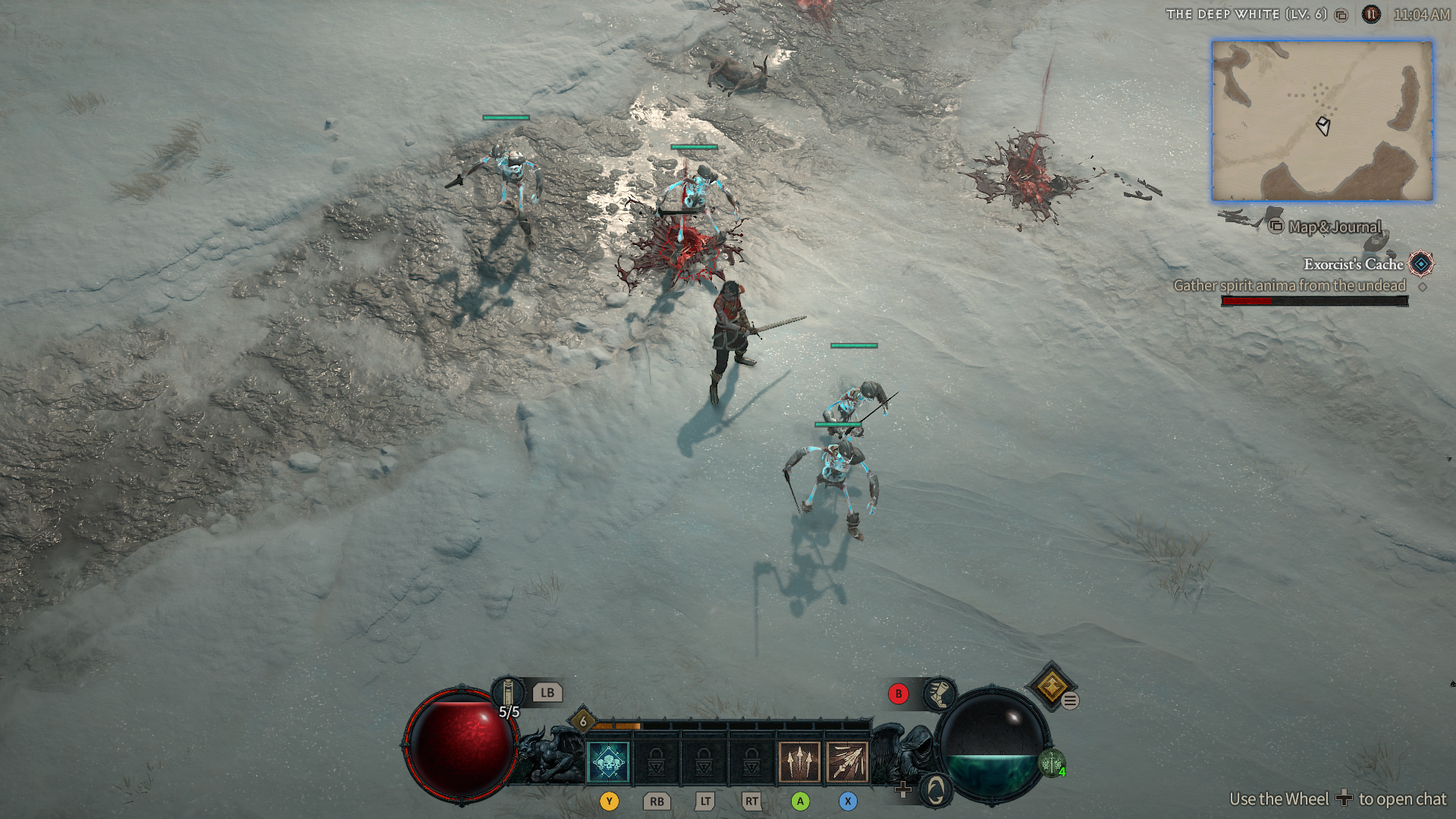
There's really no advancement in storytelling tools or techniques here from Diablo 3, and given it's been 11 years since then, that's a shame. Perhaps it's unrealistic to expect modern Blizzard to experiment and push genres forward in the way it used to, but for me it does contribute to the overall feeling that, both in its storytelling and action, Diablo 4 is sorely unambitious for such a long-awaited project.
But that's not to say the game falls completely flat narratively past the prologue. That dark horror atmosphere does feel really evocative and distinctive, and it particularly shines, appropriately, in the game's more confined areas. The optional dungeons play much more strongly up to their themes, telling self-contained stories through their set-dressing and the monsters infesting them. A fortress once holy but now overrun by werewolves, or a catacomb where a priest led his flock into the worship of vampires—these are the stories that stuck with me. And while I've already forgotten half the dialogue in Rathma's tomb, I won't soon forget its squirming, disgusting, Giger-esque decor.
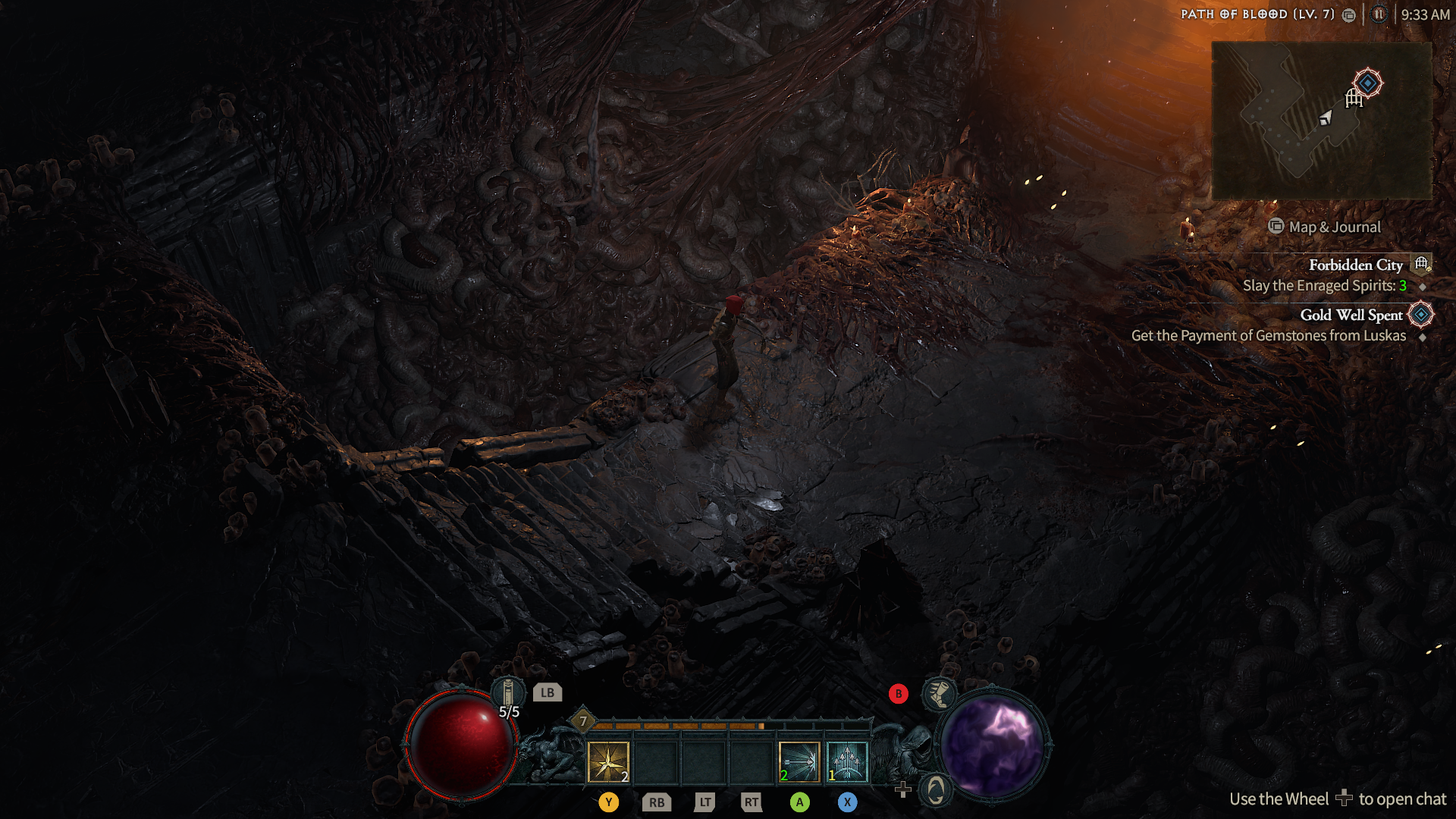
I love, as well, how completely the game leans into its unsettling religious overtones. In this cursed land, the only thing keeping the darkness at bay is the servants of an oppressive and zealous church. Preaching the virtue of poverty and extreme penitence, its priests are uncomfortable allies—and what a wonderful touch that, early on, you literally get to meet their god Inarius and discover he's a cruel and indifferent master.
The one character that really worked for me in the beta was the one most directly wrestling with this tension. Vigo is a simple soldier whose choice to take a seemingly innocuous bribe has disastrous consequences, and whose subsequent yearning for redemption serves as a backdrop to your own efforts to gain divine blessing in your quest. At first, it seems like his penitence is a simple one—the high priestess is surprisingly gentle in her admonishment, and after the equivalent of a few Hail Marys, he seems on his way to forgiveness.
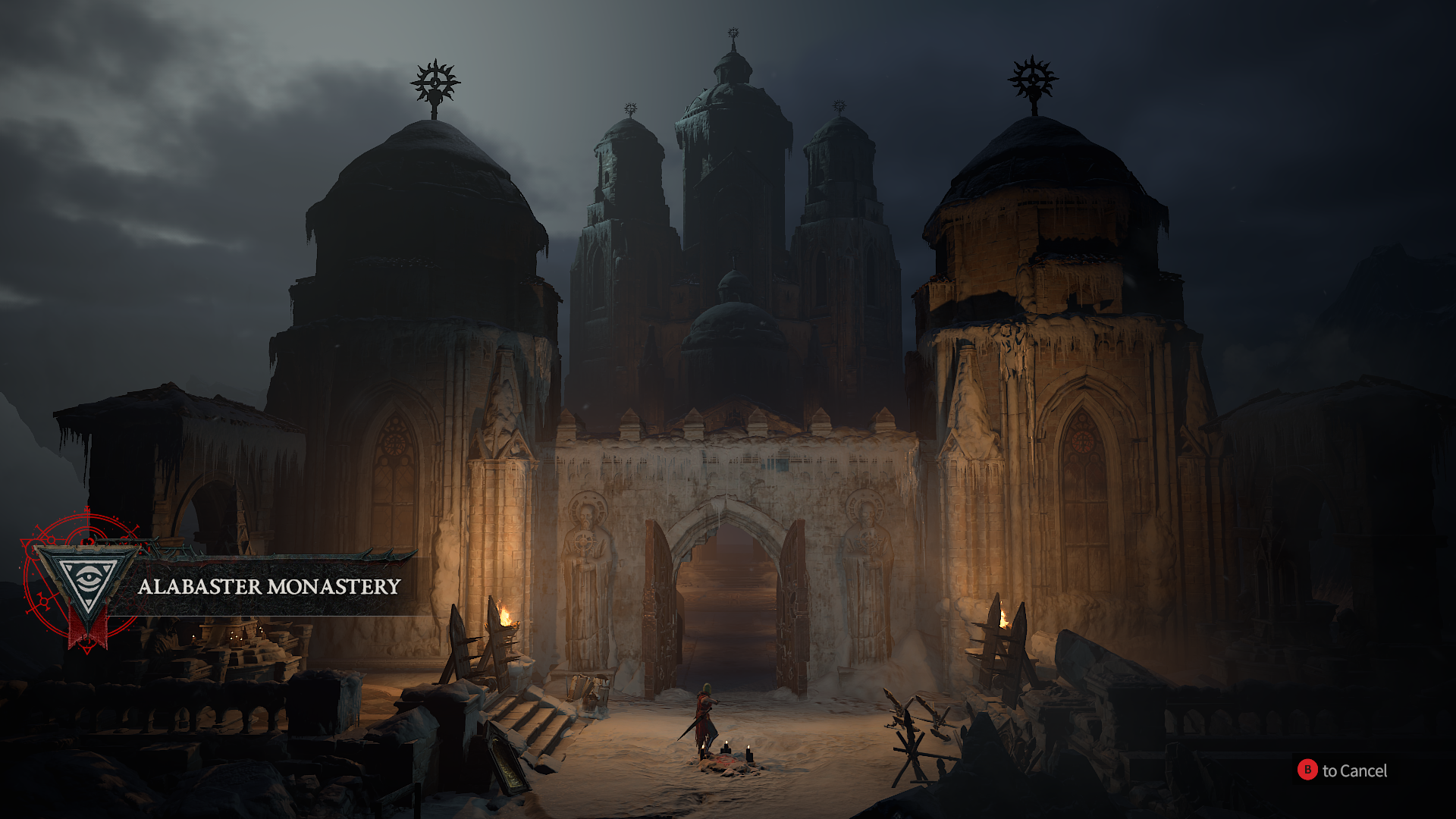
That is until a boss fight when you're aided by a mysterious hulking knight—and discover after that it's actually a kind of grotesque iron maiden mecha with Vigo interred inside. His punishment for letting a woman past his station in return for an amulet is a desperate battle and an excruciating death, and it's a punishment he's beatifically happy to receive. Now that's grimdark, and it feels like the start of some genuinely interesting probing at the place of religion in this world and ours. I'm not expecting a treatise here, but it's all good texture for the slashing and looting, and certainly more nuanced than Diablo 3's 'massacre your way through Heaven and Hell' approach.
How all this will come together in the final product is, of course, yet to be seen—the slice of story in the beta felt substantial, but was presumably just a small chunk of what we'll be playing through in June. What does seem clear to me is that Diablo 4 is making no attempt to reinvent the wheel. It's just painted its existing wheel a darker black and flecked some more blood on it, and while in places it's a very fetching shade, I would've loved to see Blizzard show me it's still got that storytelling magic it had back in the Warcraft 3 days.

Formerly the editor of PC Gamer magazine (and the dearly departed GamesMaster), Robin combines years of experience in games journalism with a lifelong love of PC gaming. First hypnotised by the light of the monitor as he muddled through Simon the Sorcerer on his uncle’s machine, he’s been a devotee ever since, devouring any RPG or strategy game to stumble into his path. Now he's channelling that devotion into filling this lovely website with features, news, reviews, and all of his hottest takes.

